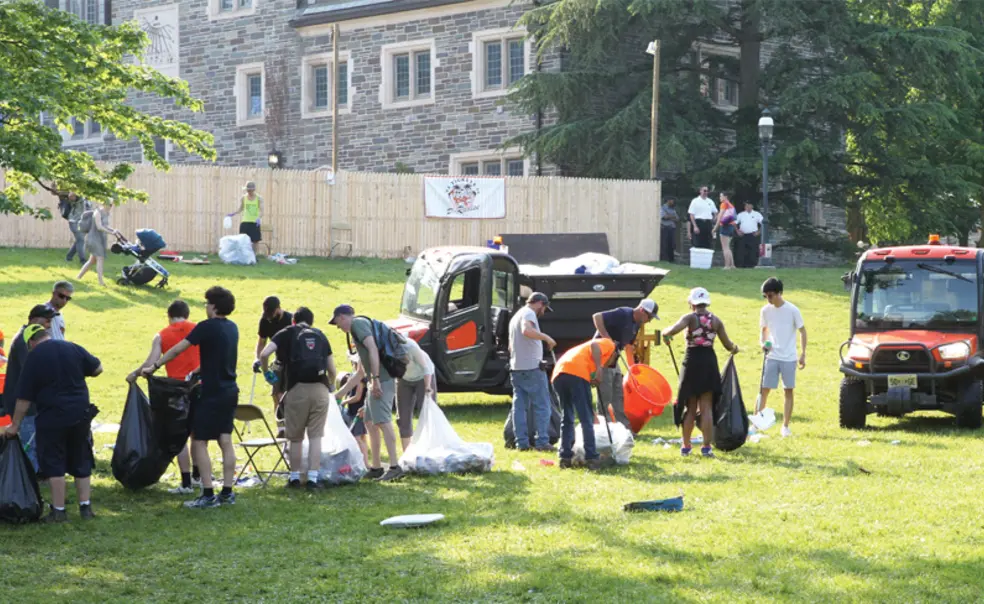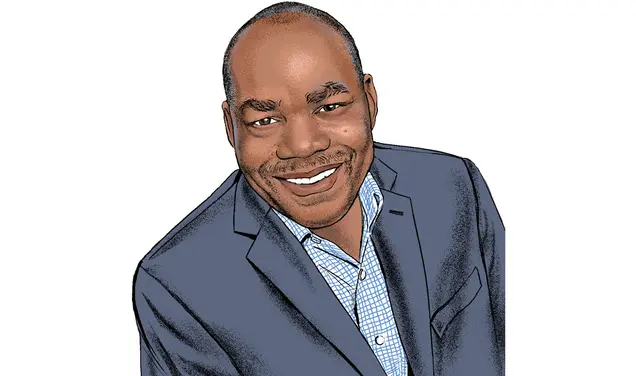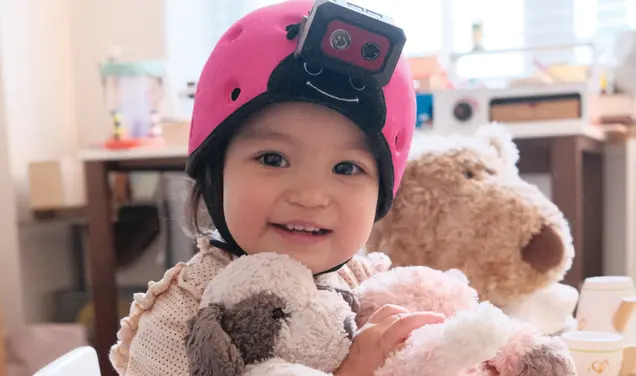Darren Milman ’27 Revamped Princeton’s Sustainability Guide for Reunions Chairs
The guide offers strategies for lowering the carbon footprint of Reunions
Princeton reunions involves countless University offices, volunteers, and, yes, alumni — so getting everyone on the same page can be a challenge. That’s why Darren Milman ’27, a School of Public and International Affairs major from Colts Neck, New Jersey, is revamping a handbook for Reunions chairs with tips and tricks on how to increase sustainability.
This academic year, Milman has been spending about four hours per week thinking about how to make the University’s biggest annual event more eco-friendly as a research associate with the Campus as a Lab program through the Office of Sustainability. He first became interested in sustainability after taking a freshman seminar course that delved into the science of composting in partnership with the University’s S.C.R.A.P. (Sustainable Composing Research at Princeton) Lab.
The digital handbook was created a few years ago by the Greening Reunions Alumni Working Group (GRAWG), and the new version will be dedicated to the late Uthara Srinivasan ’95, who was GRAWG co-chair until her death last year.
Milman, who previously wanted to be a scientist but is now considering work related to environmental policy, perhaps as an environmental consultant, is updating information from the initial handbook and tapping his passion for “graphics and presenting information to people in the most consumable way” for the project. For example, he is planning to incorporate a new progress tracker for sustainability chairs.
In addition to a planning timeline and checklist, topics covered in the handbook include how to monitor sustainability-related finances and communications, sustainability recommendations by topic, such as apparel and transportation, and advice from past chairs on earning buy-in from classmates. The goals for each class’s sustainability chair — if they have one — are to purchase carbon offsets, limit single-use plastics, offer limited or no beef at meals, and reduce waste in general.
“A lot of the things, like cups or even ordering beverages, [are] done on such a large scale, and so any minor changes that we make have a really large impact.” Milman tells PAW that he thinks these efforts could “set a precedent.”
For the first time, the Office of Sustainability also hosted a Reunions sustainability training session in the fall that was attended by representatives of all classes with major reunions and some celebrating off-year reunions. Sarah Boll, who joined Princeton as executive director of the Office of Sustainability last spring, says she “walked through the major sections of the handbook and what I call the big hitters, like your big sustainability wins at Reunions.”
The training was well received, according to Boll. “They were so appreciative. They felt like it really helped them quickly understand where they could take action in comparison to previous years.”
Boll says one unnamed class is even attempting to go carbon-neutral this year.
Boll says she plans to hold the training again this year, “hopefully as early as August,” using the updated handbook, which is intended to be digitally distributed to Reunions class chairs annually.
She will work with GRAWG to collect updated statistics going forward, such as the total volume and weight of material that is composted after Reunions.
After Milman completes the handbook refresh, he will turn his attention to the creation of a roadmap outlining sustainability goals at Reunions for the next several years. When PAW spoke with him in late January, before he started on the roadmap in earnest, he was hesitant to share many details.
“Everybody is already on board with the idea of achieving sustainability goals,” says Matthew Brinn, communications and engagement manager for the Office of Sustainability. “So really, it’s just a logistical question of, well, how do we get there most efficiently? And it’s amazing because all of these alumni and all of these students are so passionate about this, and they have so many skills. So, we’re sitting here with all of these resources ready to go, and it’s just a matter of creating the roadmap to get there.”












No responses yet